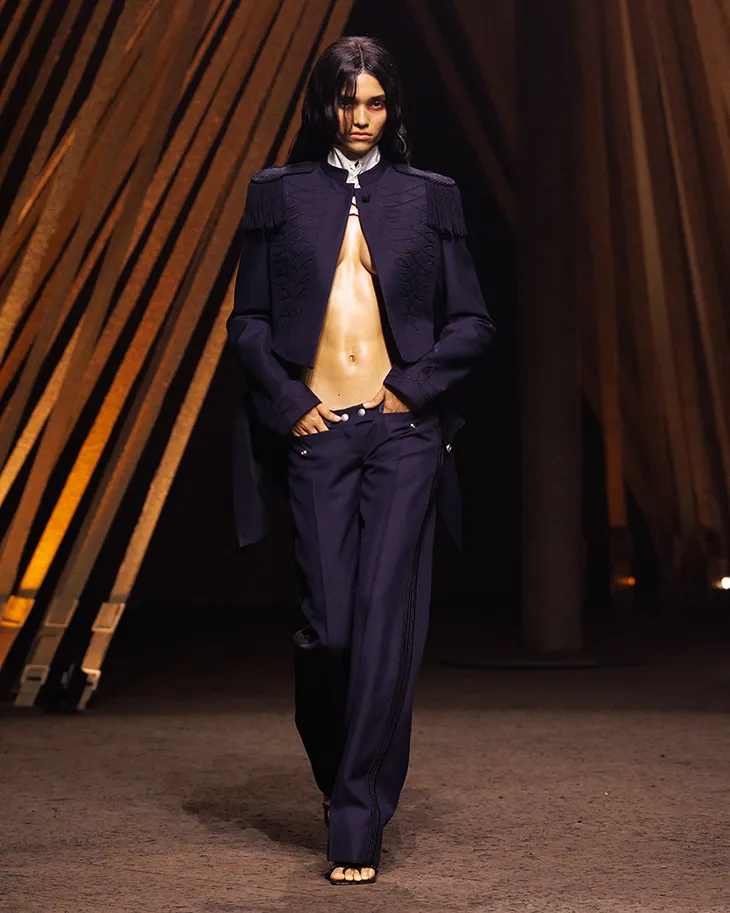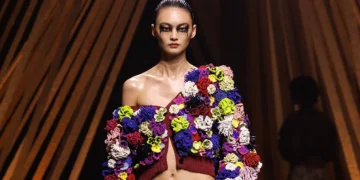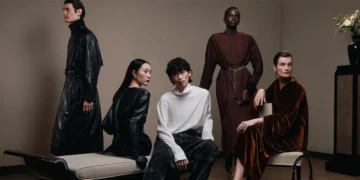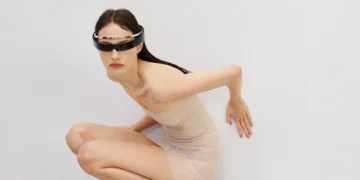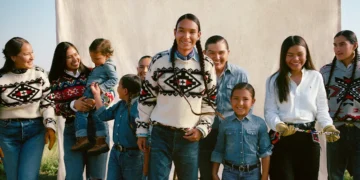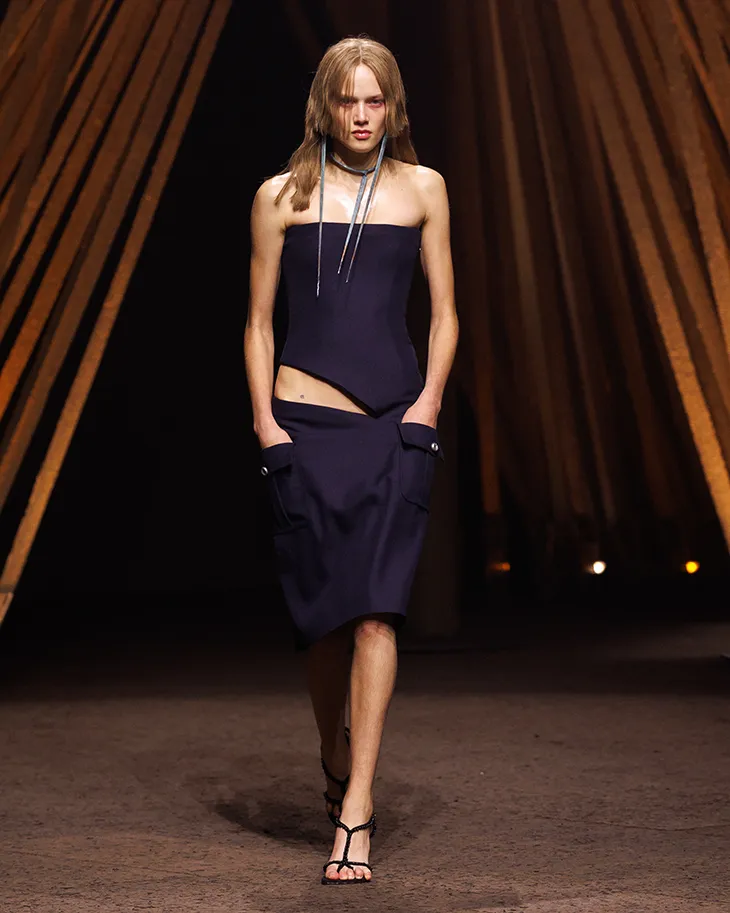
McQueen unveiled its Spring Summer 2026 collection in Paris on October 5, with Creative Director Seán McGirr presenting a narrative that placed instinct and order in direct tension. He framed the season as a push against restraint and an embrace of primal drive, asking what happens when instinct overwhelms structure. The result was a charged collection infused with references to Robin Hardy’s 1973 cult film The Wicker Man, drawing on ritual, nature, and release.
McGirr revisited the house’s signature tailoring with sharp precision, transforming uniforms into garments that explored desire and subversion. Jackets appeared in multiple interpretations with displaced patch pockets, while bustier dresses employed uniform fabrics and finishings. The tailoring heritage of McQueen remained central, yet McGirr pushed silhouettes into streetwise territory. Skirts and trousers hung low on the hips, shirting cinched and pulled against the body, and the iconic bumster returned, reimagined with adjustable polished buckles. Corsetry emerged liberated from its traditional restrictions, applied to jacquard dresses and boots with new freedom.
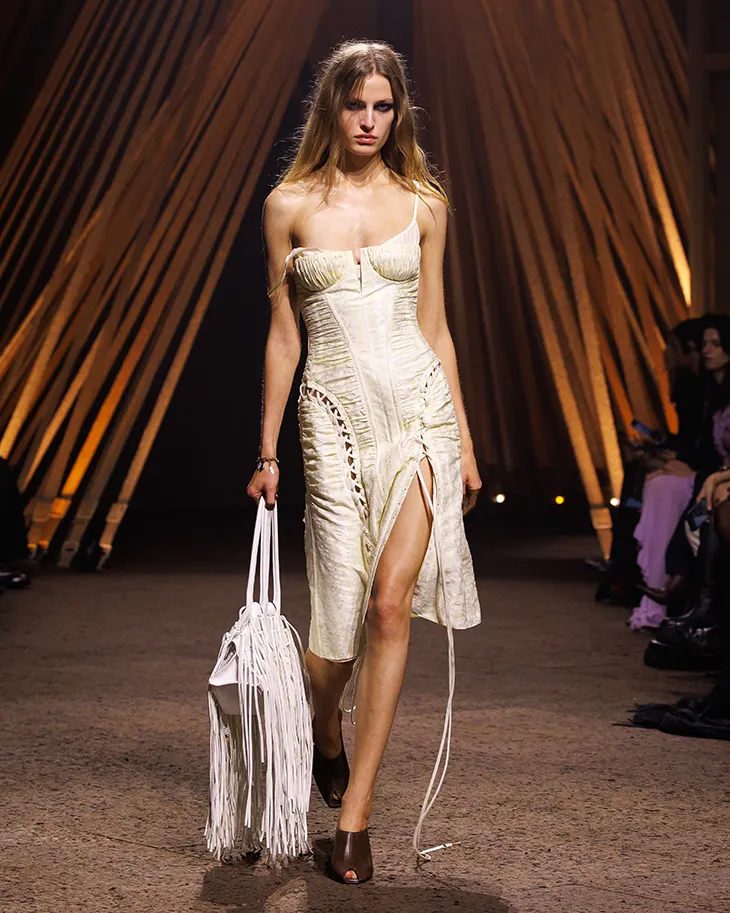
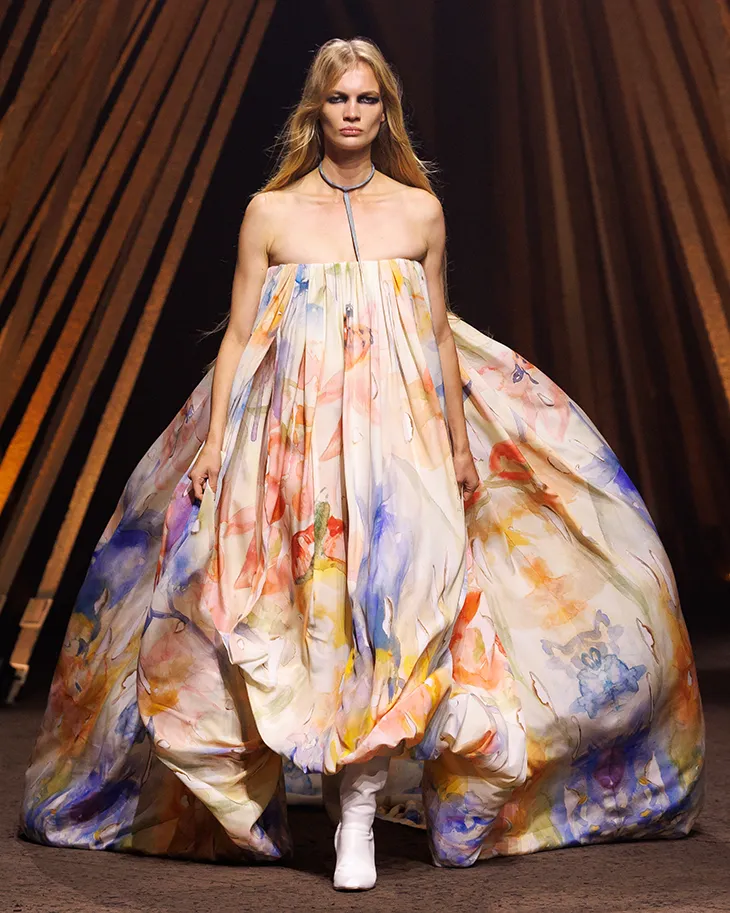
The collection’s momentum built toward gowns that surrendered to nature’s force. Billowing parachute silk carried abstracted insect prints, while scorched spray paint dégradé created a raw texture. Dresses shimmered with fire embellishments, their draped silhouettes unfurling into layered silk chiffon and flaming tendrils. The body remained central – gestures engineered into fabric, instinct overpowering order.
Fabric choices emphasized contrast between sharpness and lightness. McGirr combined wool mohair-hopsack, printed leather, chainmail, and gold bullion embroidery with washed cotton twill, floral jacquards, and airy silk habotai. Accessories reinforced the narrative: bags such as the reinterpreted De Manta featured corset lacing, flame detailing, and talismanic charms carved from wood or luminous mother of pearl. Shoes drew from the archive with the horn-shaped heel of Spring Summer 2003, now applied to mules, tall boots, and sandals in sculpted leather, suede, and jacquard. Jewelry leaned into folkloric symbolism with scissor, insect, and wishbone motifs rendered in sharp sculptural forms.
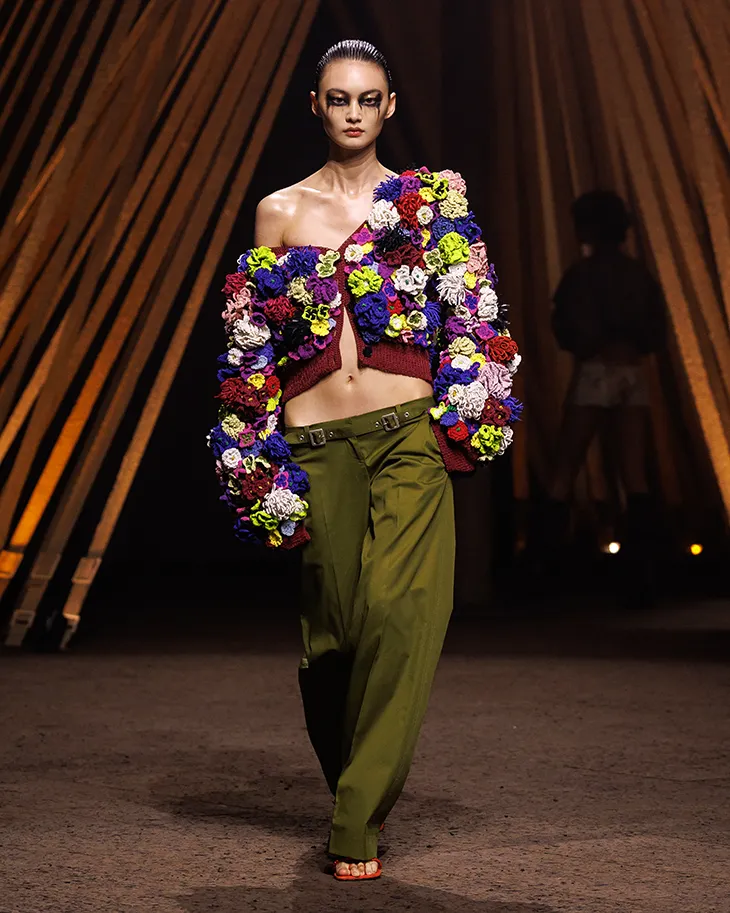
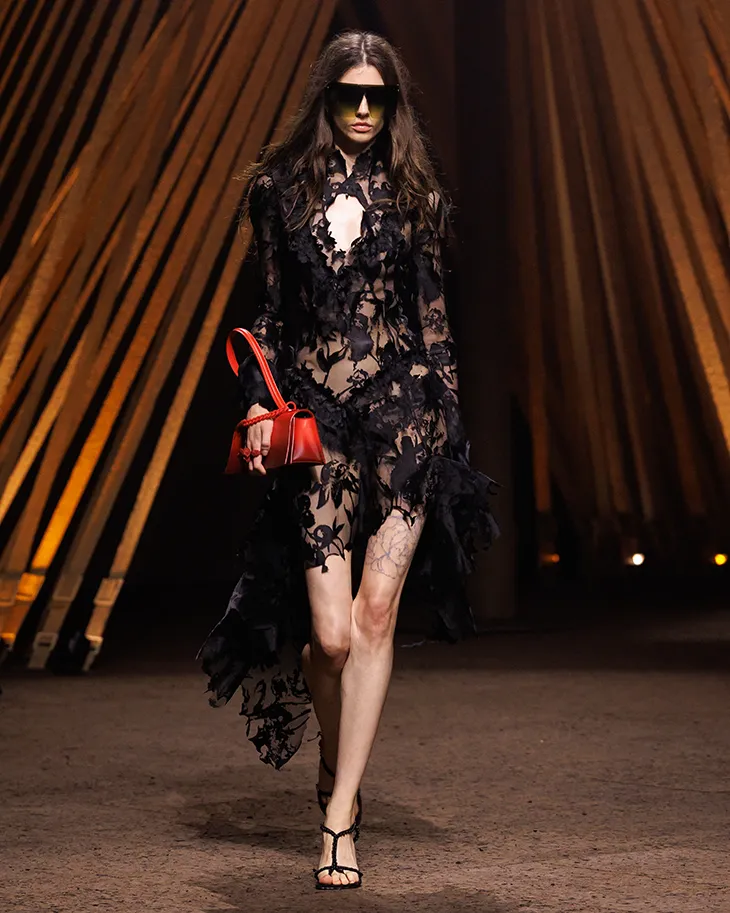
The show’s setting carried the weight of ritual and myth. At its center stood a maypole-like structure constructed with 8,000 meters of hessian ribbon, natural foliage, and cork. The Armagh Rhymers, an Irish folk group, crafted its crown, reinforcing the collection’s folkloric theme and the emphasis on communal rites of renewal. A. G. Cook provided an original soundtrack that oscillated between unsettling and uplifting, combining elemental soundscapes with syncopated techno. The music shifted from acoustic resonance to electronic pulse, echoing McGirr’s exploration of tension between control and abandon.
Sustainability framed the production. Marking the tenth anniversary of the Paris Climate Agreement, McQueen partnered with NGO ACT1.5 to reduce environmental impact. The show used low-impact set materials, electric transport, and renewable HVO energy, reinforcing the house’s adoption of a 360º approach to sustainability in its presentations.
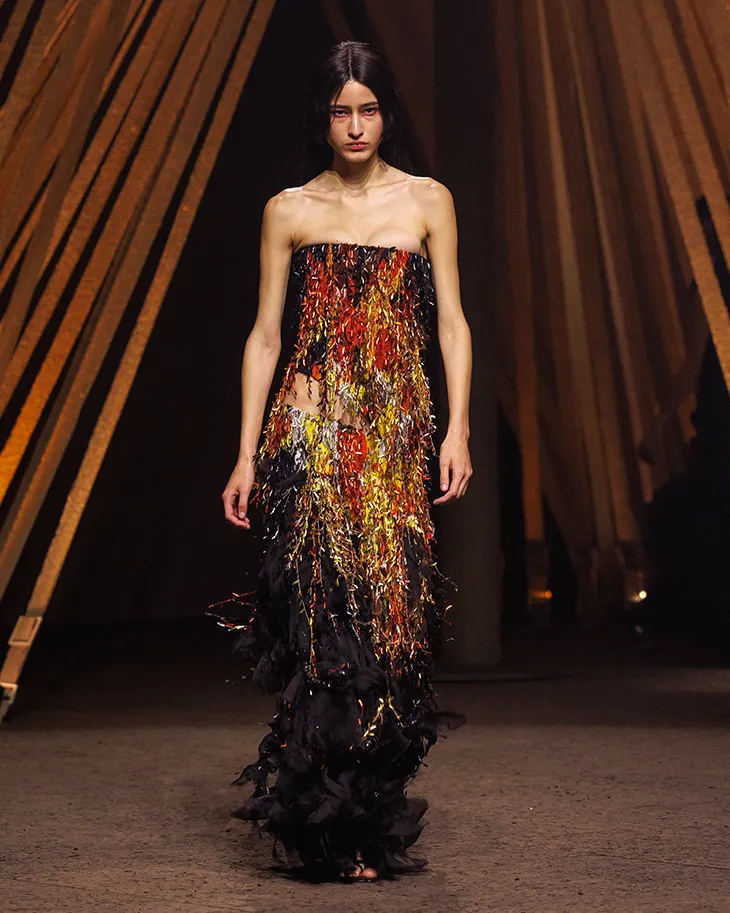
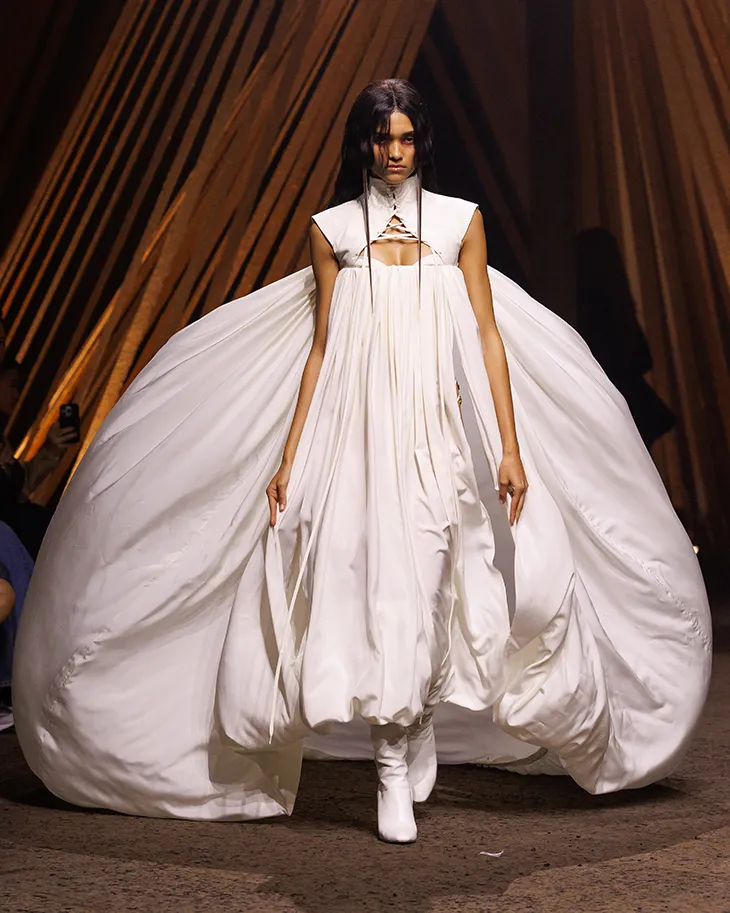
With Spring Summer 2026 collection, McGirr built a collection steeped in ritual, desire, and release. Through tailoring, corsetry, ritualistic set design, and elemental sound, McQueen staged a narrative where instinct overtook order and the body became the central site of power.
